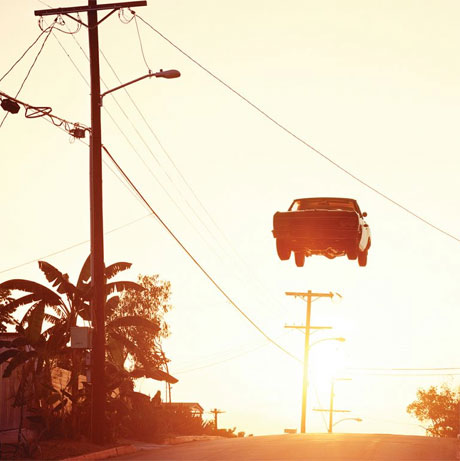 Kinski's first record in a few years sounds like a good band stuck between two polar opposite sides of their own creative influences. This time around, they lean heavy on grungy punk rock and fast tempos, leaving much of the slower bits to stagnate. The guitar work, whose slow burn melodies always seemed like a savvy subversion of their normally intended purpose, are played straight for most of the songs to compliment the lyrics. While this is definitely a new direction for the band, it is hard to say if it will be embraced by fans who preferred these elements more subtly.
Kinski's first record in a few years sounds like a good band stuck between two polar opposite sides of their own creative influences. This time around, they lean heavy on grungy punk rock and fast tempos, leaving much of the slower bits to stagnate. The guitar work, whose slow burn melodies always seemed like a savvy subversion of their normally intended purpose, are played straight for most of the songs to compliment the lyrics. While this is definitely a new direction for the band, it is hard to say if it will be embraced by fans who preferred these elements more subtly.
"Long Term Exit Strategy" might be the most misleading song to begin the album; almost a sarcastic misdirection, it is a traditionally long form Kinski space rock composition that grinds slowly against its seven minute running time like a begrudged anthem. From there, however, the band falls into a short form, punky hard rock template that it rarely escapes from. Hot headed and hooky, the next few shorter songs—especially "Last Day On Earth" and "Riff Dad"—feel gleaned from the playbook of classic grunge, and even pop punk at times. "Throw It Up" has a chugging bluesy cadence to it that might have fared better at a slower tempo, but survives well enough as a melodic garage rock workout.
Similarly, "A Little Ticker Tape Never Hurt Anybody" serves as an instrumental bridge to the end of the album, combining no wave low-distortion guitar with propulsive drumming, but it can at times feel like a play-by-numbers rehash of alt rock's most famous staples. "Conflict Free Diamonds" is a late highlight for its beckoning verses, its stutter start-and-stop melody tailored to live performances with plenty of dancing, and Kinski's irreverent lyrical sparseness, starting the song in a storyteller's focus and proceeding to fall haphazardly into an explosive solo break. "We Think She's A Nurse" is another later moment that stands out among the rest, another instrumental song that pits the album's most prominent synthesizers against the rivets of cymbals, white noise, and processed guitar, turning it into a display of glittering ambience and obfuscation that belies the rest of the album's straightforward nature.
Kinski has a strange mixture to work with on this album, trying to redeem a homogenous sound by running their own innate style into it. It is a choice a lot of bands make when they are trying to preach the quality of their core songwriting, and they have grown up listening to enough success stories to know how to play it. Still, this album is not a totally convincing effort, often slipping into vagueness when the band runs out of ideas. It survives on its strong tracks alone, which are plenty of fun, even if they never quite sound like Kinski.
samples:
 
Read More

